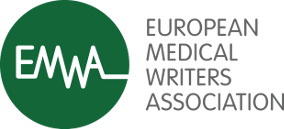Regulatory News - November 2019
The European Commission published a presentation outlining Horizon Europe: The next EU research & innovation investment programme (2021 – 2027)
The European Commission has published a presentation outlining Horizon Europe available in 23 languages. The Commission's proposal for Horizon Europe is an ambitious €100 billion research and innovation programme to succeed Horizon 2020. The European Parliament and the Council of the EU reached in March and April 2019 a provisional agreement on Horizon Europe. The European Parliament endorsed the provisional agreement on 17 April 2019. The presentation is available here.
EMA/FDA analysis shows a high degree of alignment in marketing application decisions between EU and US
EMA and the US Food and Drug Administration (FDA) are aligned in more than 90% of marketing authorisation decisions for new medicines. This is one of the findings of a joint EMA/FDA analysis comparing decisions on 107 new medicine applications at the two agencies between 2014 and 2016. The study also looked at applications for which the agencies had differing outcomes in terms of type of approval and indication. The most common reason for diverging decisions at the two agencies were differences in conclusions about efficacy. Differences in clinical data submitted in support of an application were the second most common root of divergent FDA and EMA decisions. “The high rate of convergence in the authorisation of new medicines at EMA and the FDA is the result of expanded investment in dialogue and cooperation since 2003 and has fostered alignment between the EU and the US with respect to decisions on marketing authorisations, while both agencies evaluate applications independently of each other,” said Zaide Frias, head of EMA’s human medicines evaluation division. ”Our cooperation clearly supports both agencies in achieving a common goal of maximising patient access to safe, effective and high high-quality medicines in both regions,” she added. This is the first analysis by EMA and the FDA that compares the agencies’ decisions related to marketing authorisations. Some differences were observed in the clinical data due to the difference in timing of submissions (more applications were submitted to the FDA before they were submitted to EMA). Compared to the FDA, EMA often reviewed applications including additional clinical trials or, particularly for oncology medicines, more mature data from the same clinical trial. In those instances, EMA was more likely than the FDA to grant standard approval, a broader indication, or use of a medicine as first-line therapy. Over the past decade, EMA and the FDA have established joint working groups and several forums for information sharing and collaboration around many aspects of medicine development and regulation, including ‘clusters’ on special topics and therapeutic areas, as well as parallel scientific advice and protocol assistance. These groups bring together experts for example on plans for manufacturing or clinical site inspections, development of medicines for children, oncology products, biostatistics, rare diseases, and vaccines. While these groups are not forums for shared decision-making, the strong alignment in decisions on marketing authorisations suggests that they may be contributing to alignment on regulatory science. Most of the information used for the study was sourced from EMA’s publicly available European Public Assessment Reports (EPARs) and FDA reviews, which contain the agencies’ rationale for their decisions on applications. The article, entitled “A comparison of EMA and FDA decisions for new drug marketing applications 2014-2016: concordance, discordance and why”, is available through open access in Clinical Pharmacology and Therapeutics.
Restrictions in use of Xeljanz (tofacitinib) while EMA reviews risk of blood clots in lungs
EMA’s safety committee (PRAC) is recommending that doctors must not prescribe the 10 mg twice daily dose of Xeljanz (tofacitinib) in patients who are at high risk of blood clots in the lungs. These include patients who have heart failure, cancer, inherited blood clotting disorders or a history of blood clots, as well as patients who take combined hormonal contraceptives, are receiving hormone replacement therapy or are undergoing major surgery. In addition, doctors should consider other factors that may increase the risk of blood clots in the lungs including age, obesity, smoking, or immobilisation. Xeljanz is currently authorised for the treatment of rheumatoid arthritis, psoriatic arthritis, and severe ulcerative colitis. The PRAC’s recommendation follows results from an ongoing study (study A3921133) in patients with rheumatoid arthritis. This study showed an increased risk of blood clots in the lungs and death when the 10 mg twice daily dose was used, which is double the recommended dose for rheumatoid arthritis. The new advice means that, since 10 mg is the only recommended starting dose for ulcerative colitis, patients with this condition who are at high risk of blood clots must not be started on Xeljanz. Patients at high risk currently taking this dose for any condition must be switched to alternative treatments. Patients should not stop or change their dose of Xeljanz without talking to their doctor. They should seek medical attention immediately if they experience symptoms such as difficulty breathing, pain in the chest or upper back and coughing up blood, which could indicate the presence of a blood clot in the lungs. The new recommendations are temporary and follow previous PRAC advice not to exceed the recommended 5 mg twice daily dose when treating rheumatoid arthritis. The PRAC will now carry out a review of all available evidence, and updated guidance will be provided to patients and healthcare professionals once the review is concluded.
The updated MedDRA Version 22.1 is now available and includes new preferred terms, information on terms that meet the inclusion criteria for important medical events, and an updated SOC nomenclature.

